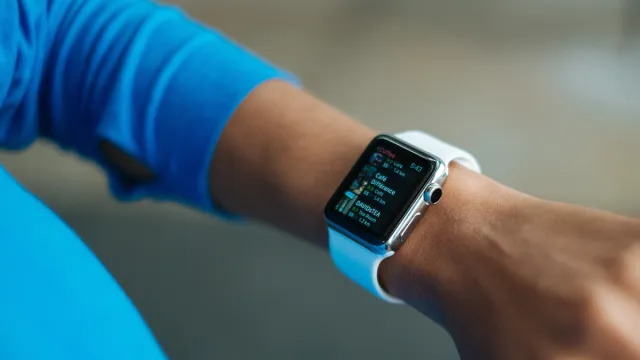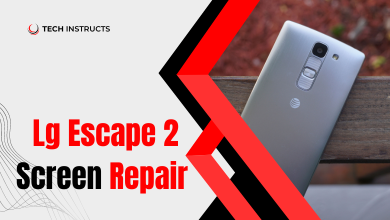
In an era where wearable technology is seamlessly integrated into our daily lives, the smartwatch stands out as a quintessential gadget. Offering convenience, connectivity, and a plethora of features, smartwatches have become ubiquitous accessories. However, amidst the buzz of their functionality lies a concern – smartwatch radiation. This article aims to unravel the mysteries surrounding smartwatch radiation, providing insights, debunking myths, and offering actionable tips to mitigate potential risks.
Understanding Smartwatch Radiation

Smartwatch radiation refers to the electromagnetic radiation emitted by these wearable devices during their operation. This radiation falls within the spectrum of non-ionizing radiation, which means it lacks sufficient energy to ionize atoms or molecules, unlike ionizing radiation such as X-rays or gamma rays.
The Science Behind Smartwatch Radiation
Smartwatches operate by utilizing wireless technologies such as Bluetooth and Wi-Fi to communicate with paired devices like smartphones. Additionally, some models feature cellular connectivity, further expanding their communication capabilities. The radiation emitted by these devices stems from their wireless transmission and reception functionalities.
RECOMMENDED POST : Fitbit vs Amazfit Choosing the Right Fitness Tracker
The Impact of Smartwatch Radiation on Health

Concerns regarding the potential health effects of smartwatch radiation have garnered significant attention in recent years. While the scientific community continues to study the long-term implications, here’s a closer look at the perceived risks:
Potential Thermal Effects
Smartwatch radiation primarily generates heat when absorbed by the body, leading to thermal effects. Prolonged exposure to high levels of radiation may result in localized heating of tissues, potentially causing discomfort or skin irritation.
Electromagnetic Hypersensitivity (EHS)
Some individuals claim to experience symptoms such as headaches, fatigue, or dizziness in proximity to electromagnetic fields, including those emitted by smartwatches. However, conclusive scientific evidence linking these symptoms directly to smartwatch radiation remains elusive.
Impact on Sleep Quality
Exposure to blue light emitted by smartwatch screens, particularly during nighttime use, can disrupt the body’s natural sleep-wake cycle. This may lead to difficulties falling asleep or achieving restorative sleep, ultimately affecting overall sleep quality.
Mitigating Smartwatch Radiation Exposure

While the debate on the health implications of smartwatch radiation persists, adopting preventive measures can minimize potential risks:
Limit Wearable Device Usage
Practice moderation in smartwatch usage, especially during extended periods of continuous wear. Remove the device when not in use, allowing the body to rest and reducing overall exposure to radiation.
Opt for Low-Radiation Models
Research and select smartwatch models that adhere to stringent radiation emission standards. Opting for devices with lower Specific Absorption Rate (SAR) values can help mitigate exposure levels.
SUGGESTED POST: Carbonox Smart Watches The Future of Wearable Technology
Conclusion
Navigating the realm of smartwatch radiation entails understanding the science, dispelling myths, and adopting precautionary measures. While the debate on its health impacts continues, informed usage and adherence to regulatory standards can promote safer interactions with wearable technology. By staying vigilant and embracing emerging research, users can harness the benefits of smartwatches while mitigating potential risks.
FAQs About Smartwatch Radiation
How does smartwatch radiation compare to other sources of radiation?
Smartwatch radiation falls under non-ionizing radiation, unlike ionizing radiation from sources like X-rays or nuclear materials. Non-ionizing radiation lacks the energy to cause cellular damage or mutations.
Can wearing a smartwatch lead to cancer?
The current scientific consensus does not establish a direct link between radiation and cancer development. However, ongoing research aims to elucidate any potential long-term health effects.
Is it safe to wear a smartwatch while sleeping?
While wearing a smartwatch during sleep may not pose immediate health risks, prolonged exposure to blue light emitted by the device’s screen can disrupt sleep patterns. Consider removing the smartwatch before bedtime for optimal sleep quality.
Do children face higher risks from radiation?
Children may be more susceptible to radiation exposure due to their thinner skulls and developing nervous systems. It’s advisable to limit their smartwatch usage and opt for models with lower ray emissions.
Can electromagnetic shielding accessories reduce radiation exposure?
Certain accessories claim to offer electromagnetic shielding, purportedly reducing radiation exposure from smartwatches. However, the effectiveness of such products remains a subject of debate, with limited scientific evidence supporting their efficacy.
What are the regulatory standards for radiation emissions?
Regulatory bodies, such as the Federal Communications Commission (FCC) in the United States, impose specific limits on the radiation emissions of electronic devices, including smartwatches. Devices must undergo testing to ensure compliance with these standards.






